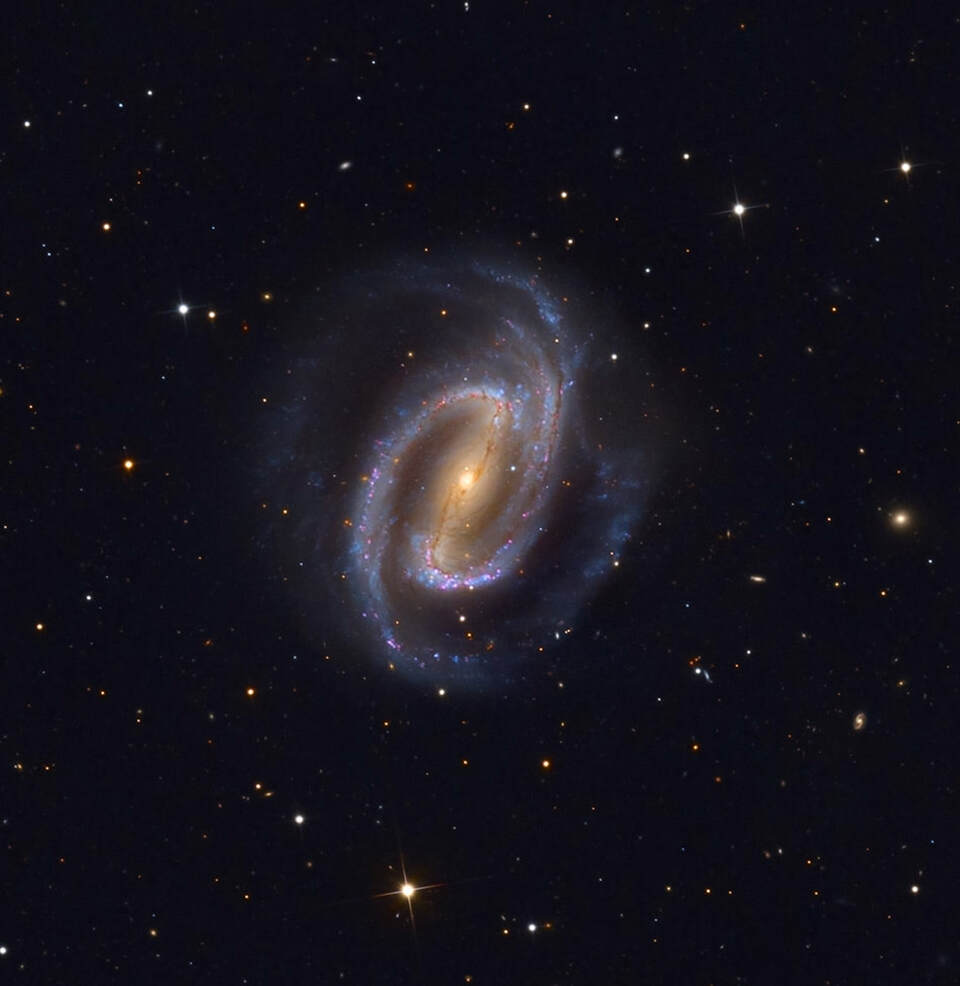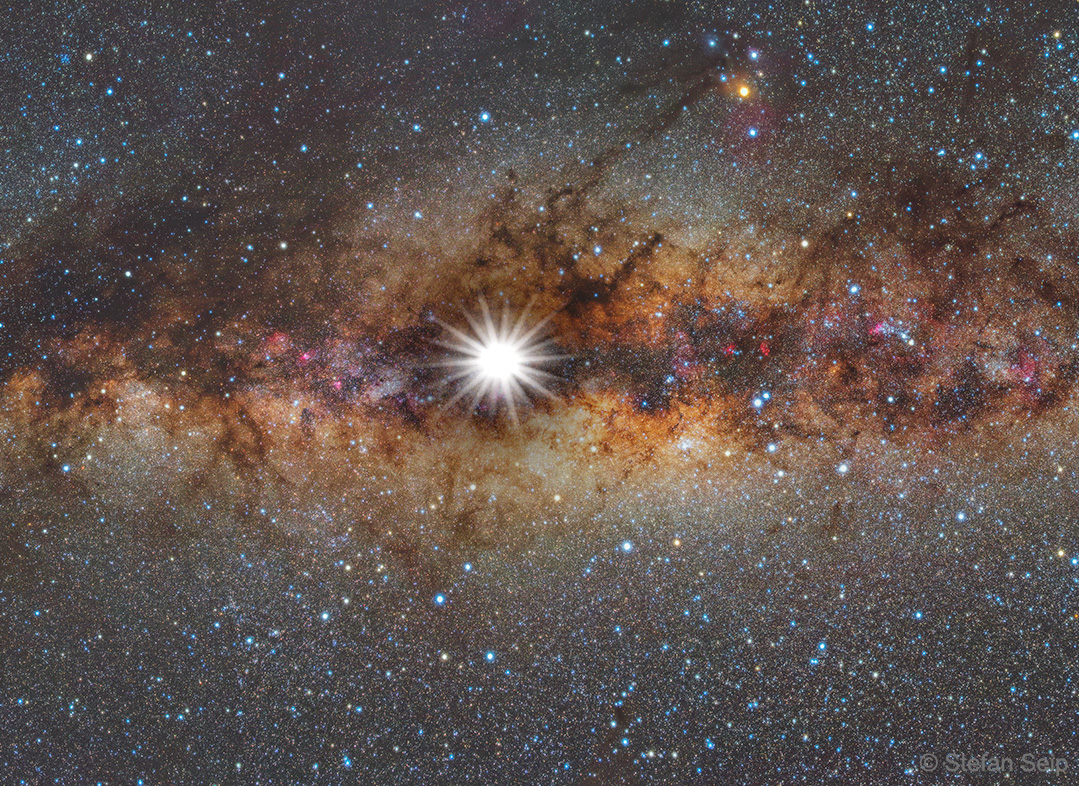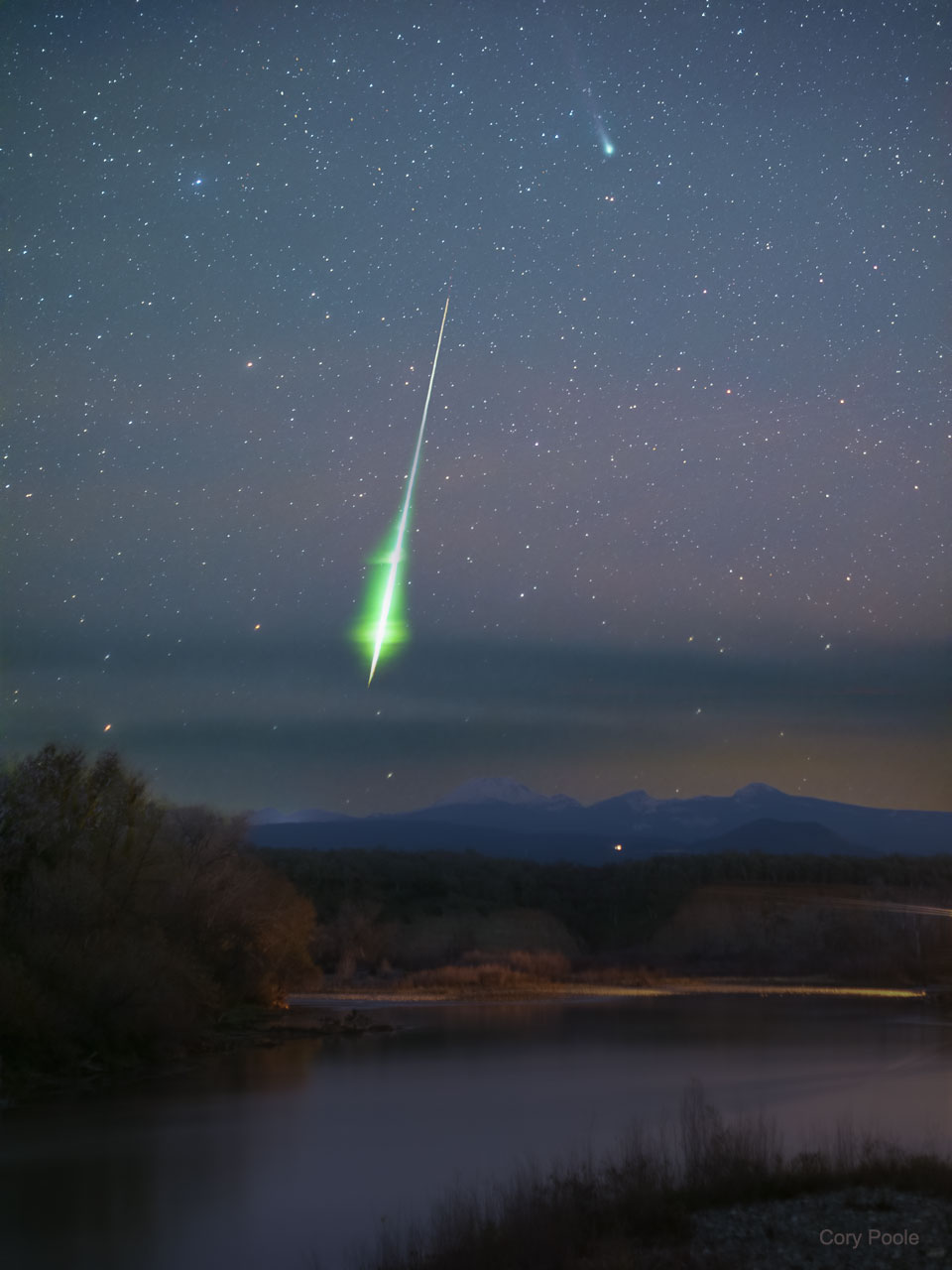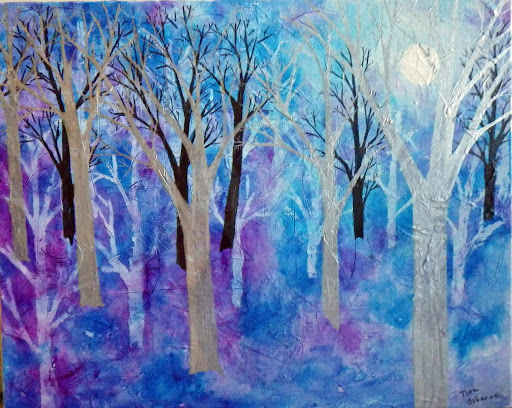Blog
NGC 1300 is a barred spiral galaxy located about 61 million light-years away in the constellation Eridanus. The galaxy is about 110,000 light-years across (about the half size of the Milky Way at 200,000). It is a member of the Eridanus Cluster, a cluster of 200 galaxies. It was discovered by John Herschel in 1835.

Frank Gambale (born 22 December 1958) is an Australian jazz fusion guitarist. He has released twenty albums over a period of three decades, and is known for his use of the sweep picking and economy picking techniques.
Gambale graduated from the Guitar Institute of Technology in Hollywood with Student of the Year honors and taught there from 1984 to 1986.
With the Mark Varney Project, consisting of Allan Holdsworth, Brett Garsed, and Shawn Lane, he recorded two albums, Truth in Shredding (1990) and Centrifugal Funk (1991). Beginning in 1987, he spent six years as a member of the Chick Corea Elektric Band, playing with Eric Marienthal, John Patitucci, and Dave Weckl. With Corea’s band he recorded five albums and shared two Grammy Award nominations. He spent twelve years as a member of Vital Information, led by Steve Smith. He reunited with the Elektric Band in 2002 and with Corea in 2011 when he joined Return to Forever IV with Stanley Clarke, Jean-Luc Ponty, and Lenny White.
more...John Patitucci (born December 22, 1959) is an American jazz bassist and composer.
John James Patitucci was born in Brooklyn, New York. When he was 12, he bought his first bass and decided on his career. He listened to bass parts in R&B songs on the radio and on his grandfather’s jazz records. He cites as influences Oscar Peterson‘s albums with Ray Brown and Wes Montgomery‘s with Ron Carter. For the development of rhythm, he points to the time he has spent with Danilo Pérez, a pianist from Panama.
In the late 1970s he studied acoustic bass at San Francisco State University and Long Beach State University. He began his professional career when he moved to Los Angeles in 1980 and made connections with Henry Mancini, Dave Grusin, and Tom Scott. From the mid-1980s to the mid-1990s he was a member of three Chick Corea groups: the Elektric Band, the Akoustic Band, and the quartet. As a leader he formed a trio with Joey Calderazzo and Peter Erskine, and a quartet with Vinnie Colaiuta, Steve Tavaglione, and John Beasley. He has played with Herbie Hancock, Wayne Shorter, and Roy Haynes. Patitucci switches between double bass and electric bass.
more...Ronald Ball (December 22, 1927 – October 1984) was a jazz pianist, composer and arranger, born in Birmingham, England.
Ball moved to London in 1948, and in the early 1950s he worked both as a bandleader and under Ronnie Scott, Tony Kinsey, Victor Feldman, and Harry Klein. In 1952, he moved to New York City and studied with Lennie Tristano. At the time, it was his ambition to learn more about the American jazz scene and in the 1950s and 1960s he worked extensively with other jazz musicians. Among the musicians Ball performed with are Chuck Wayne (1952), Dizzy Gillespie, Lee Konitz (1953–55), Kenny Clarke, Hank Mobley, Art Pepper, J.J. Johnson (1956), Kai Winding (1956, 1958), Warne Marsh,(1956–57), Buddy Rich (1958), Gene Krupa (1958), Roy Eldridge (1959) and Chris Connor(1961–63).
more...
Masayuki ‘Jojo’ Takayanagi (高柳 昌行, Takayanagi Masayuki, December 22, 1932 – June 23, 1991) was a Japanese jazz / free improvisation / noise musician. He was active in the Japanese jazz scene from the late 1950s. In the 1960s he formed New Directions (later New Direction Unit), which recorded several albums throughout the 1970s. He also recorded several albums with saxophonist Kaoru Abe, including Kaitai Teki Kohkan, Gradually Projection and Mass Projection.
more...Lil Green (December 22, 1919 (some sources give 1901 or 1910) – April 14, 1954) was an American blues singer and songwriter. She was among the leading female rhythm and blues singers of the 1940s, with a sensual soprano voice. Gospel singer R.H. Harris has lauded her voice, and her interpretation of religious songs.
Originally named Lillian Green or Lillie May Johnson, she was born in Mississippi. After the early deaths of her parents, she began performing in her teens and, having (like many African-American singers) honed her craft in the church performing gospel, she sang in Mississippi jukes, before heading to Chicago, Illinois, in 1929, where she would make all of her recordings.
more...Welcome to December’s solstice, first day of winter in the north and summer for the southern hemisphere. Astronomical markers of the seasons, solstice and equinox dates are based on the Sun’s place in its annual journey along the ecliptic, through planet Earth’s sky. At this solstice, the Sun reaches its maximum southern declination of -23.5 degrees today at 15:59 UTC, while its right ascension coordinate on the celestial sphere is 18 hours. That puts the Sun in the constellation Sagittarius in a direction near the center of our Milky Way galaxy. In fact, if you could see today’s Solstice Sun against faint background stars and nebulae (that’s really hard to do, especially in the daytime …) your view might look something like this composited panorama. To make it, images of our fair galaxy were taken under dark Namibian night skies, then stitched together in a panoramic view. From a snapshot made on 2015 December 21, the Sun was digitally overlayed as a brilliant star at today’s northern winter solstice position, close to the center of the Milky Way.

Francisco Gustavo Sánchez Gómez (21 December 1947 – 25 February 2014), known as Paco de Lucía (/ˈpɑːkoʊ dɛ luːˈtʃiːə/;IPA: [ˈpako ðe luˈθi.a]), was a Spanish virtuoso flamenco guitarist, composer, and record producer. A leading proponent of the new flamenco style, he was one of the first flamenco guitarists to branch into classical and jazz. Richard Chapman and Eric Clapton, authors of Guitar: Music, History, Players, describe de Lucía as a “titanic figure in the world of flamenco guitar”, and Dennis Koster, author of Guitar Atlas, Flamenco, has referred to de Lucía as “one of history’s greatest guitarists”.
De Lucía was noted for his fast and fluent picados (fingerstyle runs). A master of contrast, he often juxtaposed picados and rasgueados(flamenco strumming) with more sensitive playing and was known for adding abstract chords and scale tones to his compositions with jazz influences. These innovations saw him play a key role in the development of traditional flamenco and the evolution of new flamenco and Latin jazz fusion from the 1970s. He received acclaim for his recordings with flamenco singer Camarón de la Isla in the 1970s, recording ten albums which are considered some of the most important and influential in flamenco history.
Some of de Lucía’s best known recordings include Río Ancho (later fused with Al Di Meola‘s Mediterranean Sundance), Entre dos aguas, La Barrosa, Ímpetu, Cepa Andaluza and Gloria al Niño Ricardo. His collaborations with guitarists John McLaughlin, Al Di Meola and Larry Coryell in the late 1970s saw him gain wider popularity outside his native Spain. De Lucía formed the Paco de Lucía Sextet in 1981 with his brothers, singer Pepe de Lucía and guitarist Ramón de Algeciras, and collaborated with jazz pianist Chick Corea on their 1990 album, Zyryab. In 1992, he performed live at Expo ’92 in Seville and a year later on the Plaza Mayor in Madrid. After 2004 he greatly reduced his public performances, retiring from full touring, and typically only gave several concerts a year, usually in Spain and Germany and at European festivals during the summer months.
more...Frank Vincent Zappa (December 21, 1940 – December 4, 1993) was an American musician, singer, composer, songwriter and bandleader. His work is characterized by nonconformity, free-form improvisation, sound experiments, musical virtuosity and satire of American culture. In a career spanning more than 30 years, Zappa composed rock, pop, jazz, jazz fusion, orchestral and musique concrète works, and produced almost all of the 60-plus albums that he released with his band the Mothers of Invention and as a solo artist. Zappa also directed feature-length films and music videos, and designed album covers. He is considered one of the most innovative and stylistically diverse musicians of his generation.
As a self-taught composer and performer, Zappa had diverse musical influences that led him to create music that was sometimes difficult to categorize. While in his teens, he acquired a taste for 20th-century classical modernism, African-American rhythm and blues, and doo-wop music.He began writing classical music in high school, while at the same time playing drums in rhythm-and-blues bands, later switching to electric guitar. His 1966 debut album with the Mothers of Invention, Freak Out!, combined songs in conventional rock and roll format with collective improvisations and studio-generated sound collages. He continued this eclectic and experimental approach whether the fundamental format was rock, jazz, or classical.
Zappa’s output is unified by a conceptual continuity he termed “Project/Object”, with numerous musical phrases, ideas, and characters reappearing across his albums. His lyrics reflected his iconoclastic views of established social and political processes, structures and movements, often humorously so, and he has been described as the “godfather” of comedy rock. He was a strident critic of mainstream education and organized religion, and a forthright and passionate advocate for freedom of speech, self-education, political participation and the abolition of censorship. Unlike many other rock musicians of his generation, he disapproved of recreational use of drugs, but supported decriminalization and regulation.
Zappa was a highly productive and prolific artist with a controversial critical standing; supporters of his music admired its compositional complexity, while critics found it lacking emotional depth. He had greater commercial success outside the US, particularly in Europe. Though he worked as an independent artist, Zappa mostly relied on distribution agreements he had negotiated with the major record labels. He remains a major influence on musicians and composers. His honors include his 1995 induction into the Rock and Roll Hall of Fame and the 1997 Grammy Lifetime Achievement Award.
more...Bennie Ross “Hank” Crawford, Jr. (December 21, 1934 – January 29, 2009) was an American R&B, hard bop, jazz-funk, soul jazz alto saxophonist, arranger and songwriter. Crawford was musical director for Ray Charles before embarking on a solo career releasing many well-regarded albums on Atlantic, CTI and Milestone.
Crawford was born in Memphis, Tennessee, United States. He began formal piano studies at the age of nine and was soon playing for his church choir. His father had brought an alto saxophone home from the service and when Hank entered Manassas High School, he took it up in order to join the band. He credits Charlie Parker, Louis Jordan, Earl Bostic and Johnny Hodges as early influences.
Crawford appears on an early 1952 Memphis recording for B.B. King with a band including Ben Branch and Ike Turner. In 1958, Crawford went to college at Tennessee State University in Nashville, Tennessee. While at TSU, he majored in music studying theory and composition, as well as playing alto and baritone saxophone in the Tennessee State Jazz Collegians. He also led his own rock ‘n’ roll quartet, “Little Hank and the Rhythm Kings”. His bandmates all thought he looked and sounded just like Hank O’Day, a local saxophonist, which earned him the nickname “Hank”. This is when Crawford met Ray Charles, who hired Crawford originally as a baritone saxophonist. Crawford switched to alto in 1959, and remained with Charles’ band — becoming its musical director until 1963.
more...Travis Leonard Blaylock (December 21, 1934 – June 16, 1984), better known as Harmonica Slim, was an American blues harmonicist, singer and songwriter. He had some commercial success in the 1950s; recordings of two songs he wrote, “Mary Helen” and “You Better Believe It” (both 1956), were modest hits. He released a total of six singles and toured alongside Percy Mayfield, Harmonica Fats, B.B. King, T-Bone Walker, Pee Wee Crayton and Ray Charles. His debut album was released in 1969. By the late 1970s, he had stopped playing the blues.
He is not to be confused with (as he has been in some sources) two other similarly named artists, James Isaac Moore (better known as Slim Harpo) and Richard Riley Riggins (1921–2003).
Blaylock was born in Texarkana, Texas. With encouragement from his neighbors, and by listening to records by Sonny Boy Williamson I, he became competent playing the harmonica by the age of twelve. He joined a gospel group, the Sunny South Gospel Singers, in the mid-1940s, and they performed on a local radio station, KCMC. In 1949, Harmonica Slim moved to Los Angeles, California, where he started to perform with several local blues groups. Through this work, gaining experience and local connections, he began playing in package shows including working part-time with the pianist Lloyd Glenn in Lowell Fulson‘s band.
more...This picture was supposed to feature a comet. Specifically, a series of images of the brightest comet of 2021 were being captured: Comet Leonard. But the universe had other plans. Within a fraction of a second, a meteor so bright it could be called a fireball streaked through just below the comet. And the meteor’s flash was even more green than the comet’s coma. The cause of the meteor’s green was likely magnesiumevaporating from the meteor’s pebble-sized core, while the cause of the comet’s green was likely diatomic carbon recently ejected from the comet’s city-sized nucleus. The images were taken 10 days ago over the Sacramento River and Mt. Lassen in California, USA. The fireball was on the leading edge of this year’s Geminid Meteor Shower — which peaked a few days later. Comet Leonard is now fading after reaching naked-eye visibility last week — but now is moving into southern skies.

Stephen William Bragg (born 20 December 1957) is an English singer-songwriter and left-wing activist. His music blends elements of folk music, punk rock and protest songs, with lyrics that mostly span political or romantic themes. His music is heavily centred on bringing about change and involving the younger generation in activist causes.
In 1986 Bragg released Talking with the Taxman About Poetry, which became his first Top 10 album. Its title is taken from a poem by Vladimir Mayakovsky and a translated version of the poem was printed on the record’s inner sleeve. Back to Basics is a 1987 collection of his first three releases: Life’s a Riot with Spy vs Spy, Brewing Up with Billy Bragg, and Between the Wars. He enjoyed his only Number 1 hit single in May 1988, a cover of the Beatles‘ “She’s Leaving Home“, a shared A-side with Wet Wet Wet‘s “With a Little Help from My Friends“. Both were taken from a multi-artist re-recording of Sgt. Pepper’s Lonely Hearts Club Band titled Sgt. Pepper Knew My Father coordinated by the NME in aid of the charity Childline. Wet Wet Wet’s cover dominated radio airplay and its video was shown over three consecutive weeks on Top of the Pops; in week four, Bragg went on the programme to play his cover, with regular accompanist Cara Tivey on piano.
Bragg released his fourth album, Workers Playtime, in September 1988. With this album, Bragg added a full backing band and accompaniment, including Tivey on piano, Danny Thompson on double bass and veteran Micky Waller on drums. Wiggy earned a co-production credit with Joe Boyd.
more...More Posts
- Tatá Güines Day
- World Music with Ambi Subramaniam
- Daily Roots with Slim Smith
- The Cosmos with NGC 3169 & SN2003cg
- Chico Freeman Day
- Ben Riley Day
- Joe Morello Day
- World Music with Dobet Gnahoré
- Daily Roots with Linval Thompson
- The Cosmos with VV 166
- Desmond Dekker Day
- Cal Tjader Day
- World Music with VISHWA MOHAN BHATT
- Daily Roots with the Skatalites
- The Cosmos with M57
- Philly Joe Jones Day
- Sadik Hakim Day
- World Music with Abdelslam Alikane Souiri et Songhoy Blues
- Daily Roots with Lee Perry
- DRUM JAM 7-14-18
